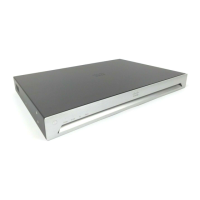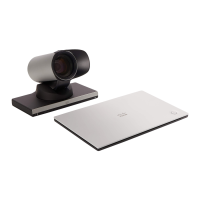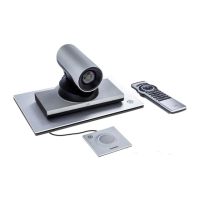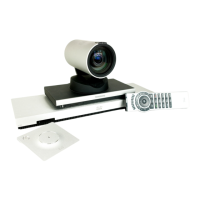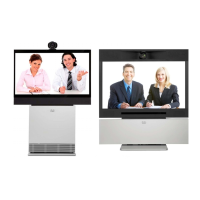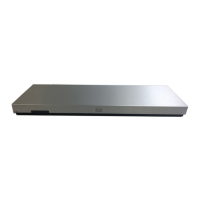4
D1509712 User Guide
Cisco TelePresence SX10, SX20
Produced: June 2017 for CE9.1
All contents © 2010–2017
Cisco Systems, Inc. All rights reserved.
Use Camera Presets
Cisco TelePresence systems let
you create predened zoom and
camera pointing directions (pan
and tilt). Use these to zoom into
the person speaking, if appropriate.
Do not forget to zoom out again
afterwards.
Loudspeaker Volume
The audio system will use the
loudspeakers built into the monitor
or the Cisco Digital Natural Audio
Module.
For some systems you can set the
default volume level by adjusting
the volume on the monitor with the
monitor remote.
Brightness Control
To adjust brightness, colors or
other settings of the monitor, use
the monitor’s own remote control.
Adjust the monitor to suit the
conditions of the conference room.
The monitors supplied by Cisco
have on-screen menus that are very
easy to use. For more information
on conguring the monitor as such,
see the corresponding user guides
and administration manuals.
Best Practice
Introduction to Video Conferencing
Other Tips
•
A successful video conference provides a
face-to-face meeting, even if the participants
are miles or continents apart. Keep in mind
that it still is a meeting—normal etiquette and
dress code apply even here.
•
Do not forget to rehearse to the extent
needed.
•
Make sure that no obstacles block your view
to the microphone(s) at all times.
•
Noise sources like computers placed on the
table should always be placed away from the
microphone of your unit. The noise from such
sources is often perceived as surprisingly loud
by the remote participants.
•
Pay attention to the background your system
will provide to the remote participants. If the
camera captures the corridor outside your
oce, people passing by may distract your
remote participants. This applies as well to
curtains with a distinct texture pattern and, in
particular, to curtains moving due to draft in
the room.
•
If you are going to share content your system
will use two video streams (duo video),
one showing the presentation and the
other showing the presenter—or the group
of presenters. Smaller systems may force
viewers to choose between showing the
presentation or the presenter.
•
For duo video some attention is needed.
Duo video is, on some video systems,
shown side–by–side with half the screen
showing the presentation and the other half
showing the presenter. To avoid appearing
like you are sitting with your back towards the
presentation look straight into the camera.
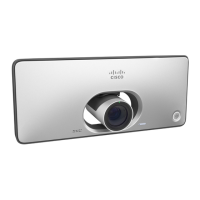
